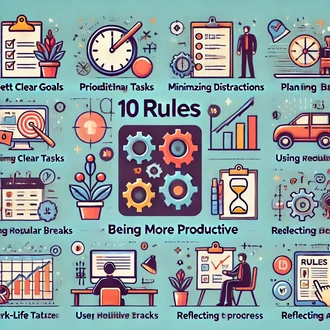Transcription Brainstorming and creative problem solving
Brainstorming is a widely recognized technique used in the work and creative environment to generate ideas and find innovative solutions to problems. It involves bringing a group of people together and encouraging unrestricted, uncritical idea generation.
In this session, we will explore how brainstorming and creative problem solving can help you boost your productivity and find innovative solutions in your work.
Defining the problem
The first step in applying brainstorming and creative problem solving is to clearly define the problem you want to solve. The more specific and clear the problem is, the more effective brainstorming will be in generating relevant ideas and solutions.
Identify the key aspects of the problem, analyze its scope and understand its implications for your work. This will help you focus your brainstorming process and generate more relevant and useful ideas.
Creating an enabling environment
Creating a conducive environment is critical to successful brainstorming. Find a quiet, distraction-free space where participants can feel comfortable and relaxed. Establish clear rules, such as no criticism and no evaluation of ideas during the brainstorming session.
Encourage active participation from all team members and make sure that every idea is heard and recorded. By creating a positive and welcoming environment, idea generation is encouraged and creative participation is fostered.
Idea Generation
During brainstorming, encourage participants to generate as many ideas as possible, no matter how far-fetched they may seem. The premise is that no idea is discarded or judged at this stage. Encourages participants to build on each other's ideas and explore different approaches and perspectives.
Use techniques such as lateral thinking, word play or the use of analogies to stimulate the generation of out-of-the-box ideas. The broader the spectrum of ideas generated, the greater the chances of finding innovative solutions.
Evaluation and selection of ideas
Once the idea generation phase is over, it is time to evaluate and select the most promising ideas. Use predefined criteria to evaluate the viability, feasibility and impact of each idea.
Consider the appropriateness of the idea to the problem you are trying to solve and its alignment with available objectives and resources. Select the most relevant and promising ideas for further development and implementation.
Solution implementation
Brainstorming is only the first step towards creative problem solving. Once you have selected the most promising ideas, it is important to develop an action plan for implementing the solutions.
Define the necessary steps, assign responsibilities and establish a timeline for implementation. Encourage collaboration and communication among team members involved in the implementation, and follow up regularly to assess progress and make adjustments if necessary.
Brainstorming and creative problem solving are not one-time events, but should be part of a work culture that fosters creativity and innovation on an ongoing basis.
Establishes an environment where idea generation is valued, active employee participation is encouraged, and creativity is recognized and rewarded. Encourages experimentation and learning through failure and success, and promotes collaboration and idea sharing throughout the organization.
problem solution




